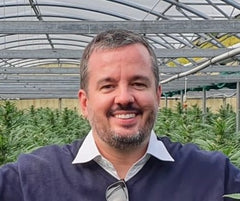Introduction: Cannabis Waste - A New Frontier in Energy Storage
The cannabis industry, known for its medical and recreational products, is now stepping into the realm of sustainable energy. Researchers in Argentina have made a groundbreaking discovery, using cannabis industry waste to create supercapacitors, a crucial component in energy storage technology.
Understanding Supercapacitors and Their Importance
Supercapacitors, essential for energy storage, come in various configurations, including symmetric, asymmetric, and battery-type. The focus of the Argentine study was on symmetric supercapacitors, which use two similar electrodes.
The Argentine Research: A Deep Dive
Conducted by researchers affiliated with CIFICEN, UNCPBA-CICPBA-CONICET, Universidad Nacional del Centro de la Provincia de Buenos Aires, and Instituto de Ingeniería Química, the study was published in the Journal of Energy Storage. It explores the potential of using cannabis waste, specifically stems and leaves, in supercapacitor production.
Methodology: Transforming Cannabis Waste into Energy Solutions
The process involved pyrolyzing cannabis waste at 500 °C, followed by varying activation conditions. The researchers used scanning electron microscopy, infrared spectroscopy, and N2 adsorption/desorption isotherms to evaluate the textural properties of the resulting activated biocarbons.
Electrochemical Characterization: Assessing Performance
The team performed cyclic voltammetry, galvanostatic charge and discharge measurements, and electrochemical impedance spectroscopy to characterize the electrochemical properties of the activated biocarbons.
Results: High-Performance Activated Biocarbons from Cannabis Waste
The study revealed that activated biocarbons derived from cannabis waste achieved high surface areas over 2500 m2g−1 and adequate porosity, making them suitable for supercapacitor electrodes. The best electrochemical performance showed a specific capacitance of 195.83 Fg−1, with significant power and energy density in the electrode cells.
Broader Implications: A Sustainable Approach to Energy Storage
This research not only offers a novel use for cannabis industry waste but also contributes to the development of more sustainable and efficient energy storage solutions. The potential for large-scale application could revolutionize the way we approach energy storage and sustainability.
The Argentine study marks a significant step in both the cannabis industry and the field of energy storage. By turning cannabis waste into a valuable resource for supercapacitor production, this research paves the way for innovative and eco-friendly energy solutions.







